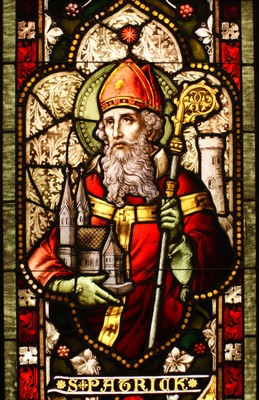 If you pastor a church, I know your work is cut out for you. The deacons and the finance committee don’t always see eye-to-eye with your vision, and the sermon you spent extra time preparing seems to get the most criticism! However, the next time you think you have it tough, remember poor old St. Patrick of Ireland.
If you pastor a church, I know your work is cut out for you. The deacons and the finance committee don’t always see eye-to-eye with your vision, and the sermon you spent extra time preparing seems to get the most criticism! However, the next time you think you have it tough, remember poor old St. Patrick of Ireland.
Maybe your prayer life has deepened dealing with a difficult congregation. Patrick’s prayer life was developed in the six years of his youth spent as a slave after being kidnapped by pirates! When people disagree with your exhortations, the worst that happens is an unkind anonymous letter. When the Druids disagreed with Patrick, they often kidnapped him and beat him up. And in spite of having baptized thousands, Patrick’s own church members still questioned his fitness to be a minister at times!
Yes, as demanding as a modern pastor’s life can be, there is much for which to be thankful in comparison with some who have come before us!
Nevertheless, every March 17, we celebrate St. Patrick’s Day, even though most people know very little about him. We associate green with St. Patrick, and for some odd reason, we like to pinch our friends and family members if they are not wearing this color. And we associate luck with St. Patrick’s Day, too; but knowing the little bit about him that I do, I have to think St. Patrick would be mortified at associating luck (a pagan concept) with a day held in his honor. Fortunately, there’s more to St. Patrick than shamrocks (which he supposedly used to teach his parishioners about the Trinity), luck, and the color green.
 Although not everything about St. Patrick’s life is verifiable, most agree that he is the most important person in history responsible for the evangelization of Ireland to Christianity from paganism. So, this St. Patrick’s Day, go beyond our modern frivolous festivities to find out a bit more of this ancient Christian’s story of faith. One way to do this is with St. Patrick of Ireland for the Accordance Library.
Although not everything about St. Patrick’s life is verifiable, most agree that he is the most important person in history responsible for the evangelization of Ireland to Christianity from paganism. So, this St. Patrick’s Day, go beyond our modern frivolous festivities to find out a bit more of this ancient Christian’s story of faith. One way to do this is with St. Patrick of Ireland for the Accordance Library.
This special Accordance title we put together consists of four sections: (1) A Biographical Sketch by David Lang; (2) A Biography of St. Patrick, excerpted from History of the Scottish Nation by J. A. Wylie; (3) The Confessions of St. Patrick; and finally, (4) a poem, “The Shield of St. Patrick.”
I was especially struck by a portion of the fourth part of this work that reads,
Christ be with me, Christ within me,
Christ behind me, Christ before me,
Christ beside me, Christ to win me;
Christ to comfort and restore me;
Christ beneath me, Christ above me,
Christ in quiet, Christ in danger,
Christ in hearts of all that love me,
Christ in mouth of friend and stranger.
I believe the above speaks to Patrick’s experience of one who learned to put his hope in his Savior in both good times as well as the kind of extreme circumstances that few of us (thankfully) ever have to experience for ourselves.


